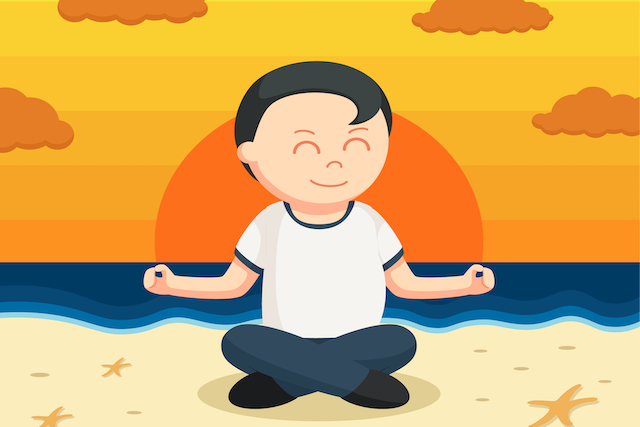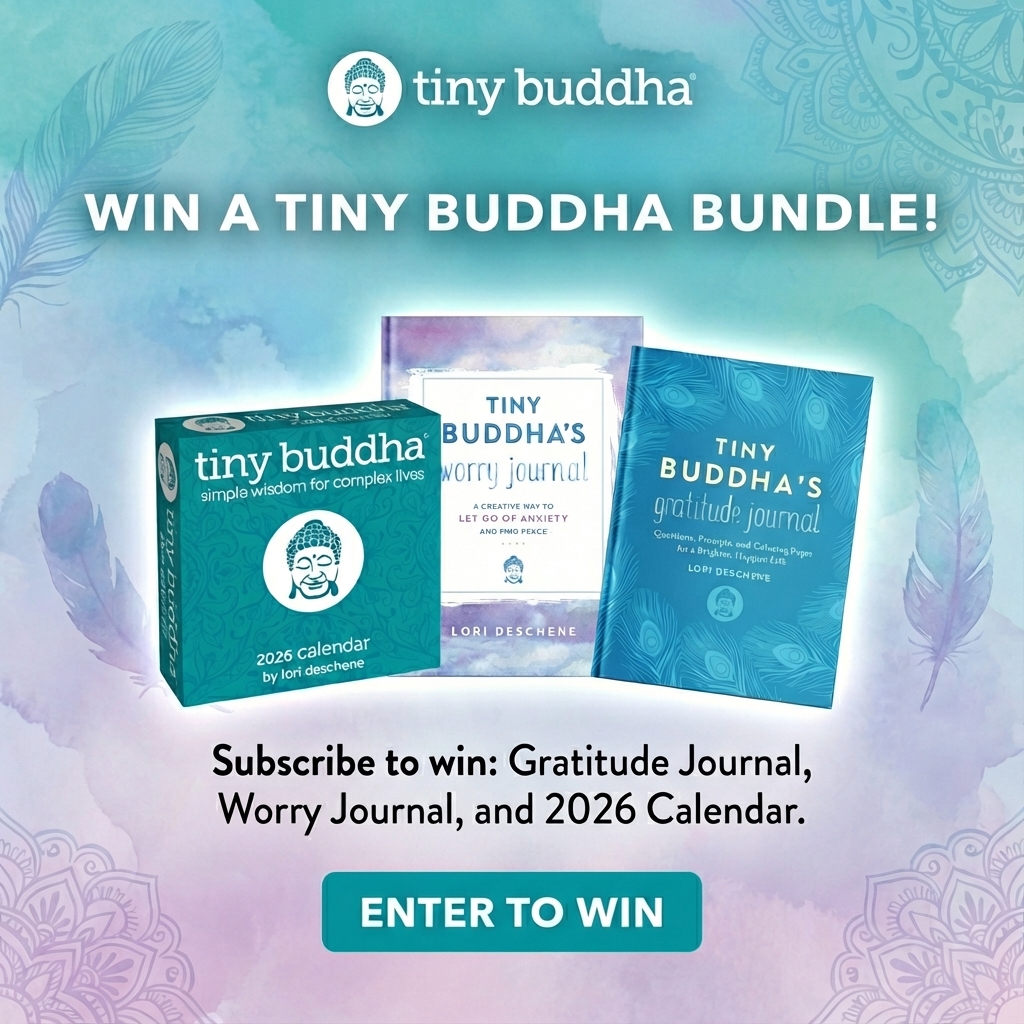
“By living deeply in the present moment we can understand the past better and we can prepare for a better future.” ~Thich Nhat Hanh
When I was in high school, a hit-and-run car accident changed my world. My boyfriend at the time lost his nineteen-year-old brother to the accident. I had never met his brother, but it didn’t matter; a dark veil had been cast over my life.
In the days, weeks, months, and years following the accident, I sank into a deeper and deeper depression. I started to have panic attacks and I cut myself daily, trying to feel anything other than terror and despair. I sought treatment, met with therapists, tried dozens of medications, and routinely turned back to alcohol when nothing worked.
Before long, I fell in love with a man who was also deeply depressed. Six months after our marriage, I found him collapsed on our living room floor after trying to kill himself by overdosing on his medication.
I called the authorities, supported him through the ensuing hospital stay, and turned right back to my unhealthy methods of dealing with the pain.
For years, I muddled through the darkness, thinking I was destined to lead a miserable existence. Over and over, I told myself life would have been so much better if that hit-and-run accident had never occurred. I was convinced it was the one pivotal factor that had destroyed my life.
Eventually, the stress of living this way caught up with me. In addition to the depression and anxiety, I began to have migraines, uncontrollable nosebleeds, and excruciating muscle pain. I went to doctor after doctor and at one point was taking seven prescription medications every day, with no relief in sight.
Finally, it was clear I needed to take a different course of action. I decided to look into meditation. Before long, I had accumulated three meditation methods to try.
The first method was a simple practice of closing my eyes and counting each breath. I tried this until it became evident that I could never get past the number one before my brain started reliving events from my past. Closing my eyes, it seemed, took me too far away from the present moment.
Instead of closing my eyes, I had more success keeping my eyes open and silently but consciously acknowledging my surroundings. Whether I was at home, on the train, or walking down the street, I could practice mindfulness by saying, “Hello, carpet,” or “Hello, tree,” and I was immediately grounded into the present.
Perhaps it seems strange to greet inanimate objects, but it helped me maintain a more immediate experience of the present moment, so I went with it.
After that, I tried body scan meditation, or moment-to-moment awareness of sensations within the body. Taking some time to recognize sensations as they occurred turned out to be a great help in training my mind to accept and acknowledge discomfort until it passed. Seeing that discomfort was a passing experience was a life-changing realization all on its own.
Throughout my meditation experiments, I continued to have trouble staying present for more than a few seconds at a time, but I could see it was beginning to have some benefits.
When I returned to counting breaths, I began to reach two or three or sometimes even ten. With growing faith that mindfulness meditation was having a positive effect on my life, I kept meditating until finally one day my meditation was interrupted by the sound of an ambulance siren.
As I listened to the siren, I felt a panic attack coming on. The siren made me think back to the day of the hit-and-run accident, and when I finally let go of that thought, I thought back to the day of my husband’s suicide attempt.
I braced myself against the panic attack and desperately tried to remember a mindfulness technique I could employ in that moment.
During a panic attack, bodily sensations are extreme, so it made sense to me to try and focus on body awareness and how I was relating to my surroundings.
Despite the inner voice that kept telling me I was going to die, I resolved to experience this panic attack mindfully, from beginning to end. I turned my attention to my breathing and faced that panic attack like it was an ocean wave I was going to allow to wash over me.
While every muscle in my body began to tighten, I consciously tried to let go of the tension and simply notice what was happening in my body, without judgment or blame.
Almost instantly, I experienced a massive muscle spasm that made my entire body lurch. Awareness of my surroundings became a feeling that I was falling through the floor, and I worried this really was the panic attack that would kill me.
But then, the panic, the terror, and all that muscle tension passed through my body in what I can only describe as an enormous wave of energy.
I felt that wave pass from the top of my head through every last finger and toe, and just as suddenly as it had begun, the panic was gone. As I returned to my breathing, I listened again to the siren and, for the first time, I heard a siren that had nothing to do with me or my past. I heard a siren that was a siren and nothing more.
In the five years since this experience, I haven’t had a single panic attack. In my case, panic was an extreme expression of resistance to thoughts and memories I didn’t want to experience. When I learned to stop resisting, I learned to beat panic.
I can’t guarantee that anyone else’s experience will be the same, but perhaps I can share some suggestions based on what worked for me. If you are one of the millions of people in the world who suffer from panic attacks, here are a few methods you can try the next time you feel one approaching.
Counting Breaths
Notice your breathing. Is it rapid and shallow? Is it becoming shallower the more you panic? Take a moment to close your eyes and turn your attention to counting breaths.
If you find you are counting very quickly, see if you can focus on just one or two long inhalations and exhalations. Don’t worry if you can’t get past one or two. If you notice your mind has strayed from counting, congratulations! You have experienced a moment of mindfulness under extremely challenging conditions.
Acknowledging Your Surroundings
If, like me, you find that closing your eyes makes you panic more, open your eyes and start acknowledging your surroundings. Say hello to your hands, your feet, the ground, the ceiling, a chair, a tree, or anything at all you spot around you. If you feel like this is ridiculous, it is! Allow yourself to chuckle and have a sense of humor about it.
Body Awareness
Turn your attention to what you are feeling in each part if your body. Are your muscles tightening? Can you feel your fingers and toes? What happens if you try to wiggle them? Does the sensation change as you continue to breathe in long inhalations and exhalations? Whatever you are feeling, try to let it happen without resistance.
—
What I learned from my experience was a lesson I will not soon forget: I only found my inner strength when I stopped trying to fight.
Panic gains momentum from the energy we put into fighting it, and the fact is, we don’t always need to fight it. Life happens to you and me as it happens to all people, whether we are ready for it or not, and all we really need to do is be open to experiencing it one moment at a time.
About Krista Lester
Krista Lester is creator of the @BunnyBuddhism Twitter feed and author of Bunny Buddhism: Hopping Along the Path to Enlightenment. She is a writer, teacher, meditation practitioner and yoga enthusiast, who shares her story in hopes that it may help others who suffer. To buy the book or keep up with her latest news, visit http://BunnyBuddhism.com.
- Web |
- More Posts












 Though I run this site, it is not mine. It's ours. It's not about me. It's about us. Your stories and your wisdom are just as meaningful as mine.
Though I run this site, it is not mine. It's ours. It's not about me. It's about us. Your stories and your wisdom are just as meaningful as mine. 